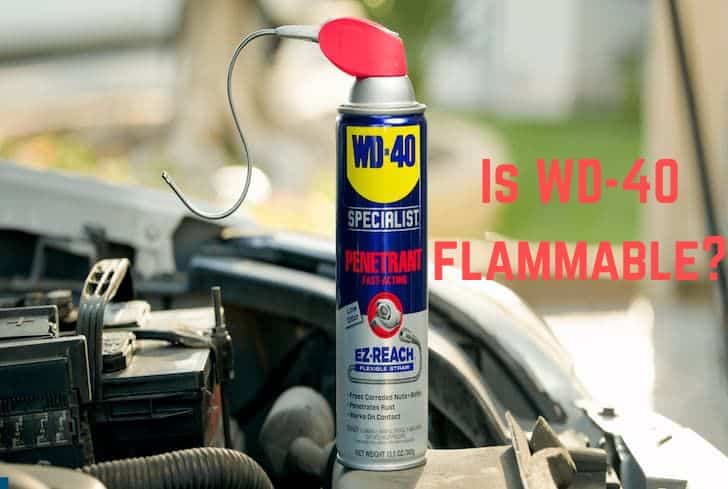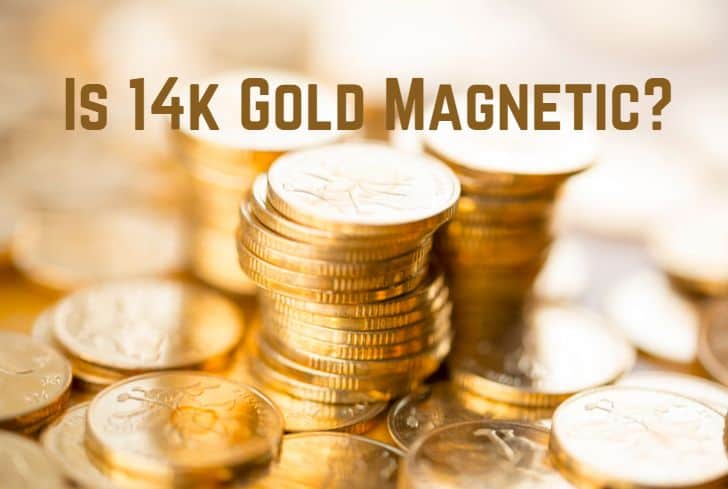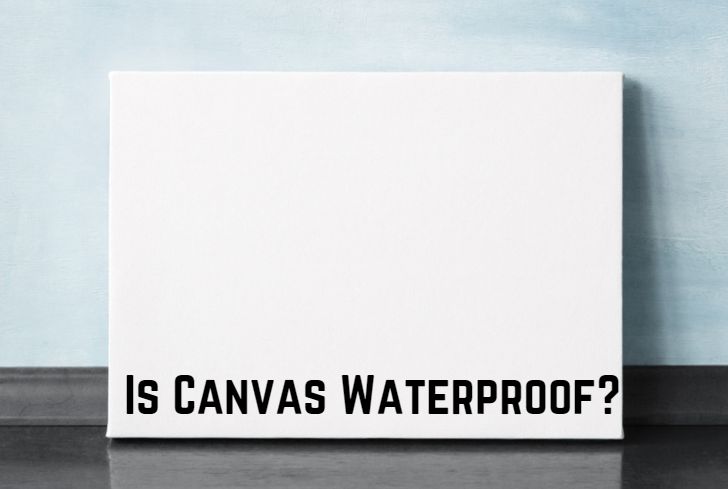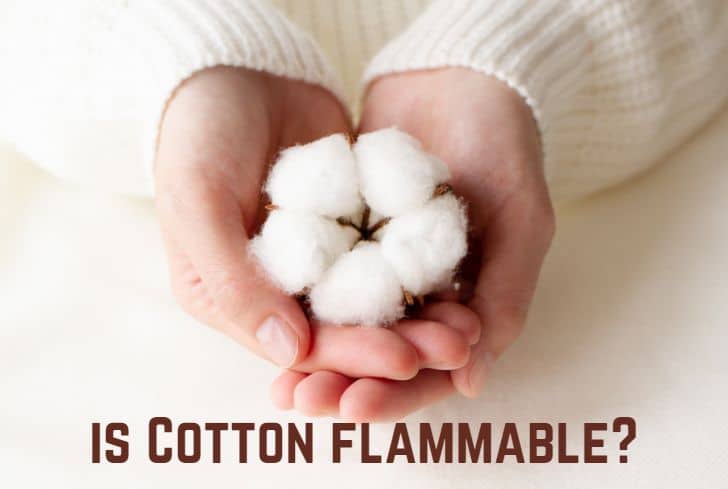Is Rust Magnetic? (Answered)
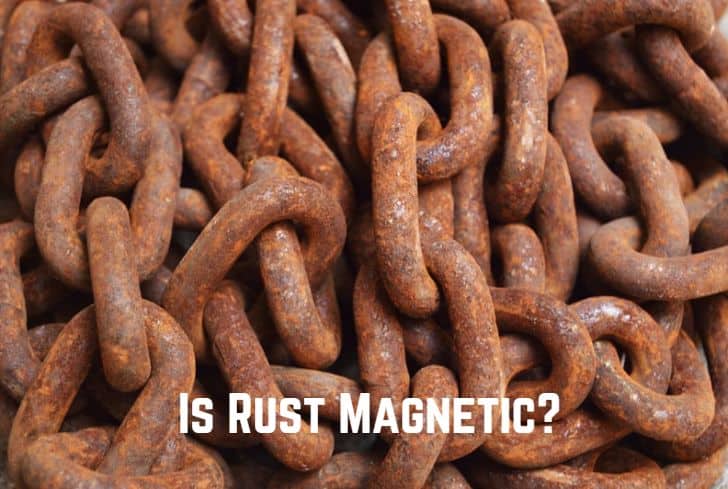
Rust causes many companies and industries to spend money on repairs for metallic structures. Some bridges, like the Morandi Bridge, have collapsed, and rust has rendered vehicles, ships, and aeroplanes obsolete. Most metals lose some of their properties when they rust. Is rust magnetic, then?
This article explores whether magnets attract rust, which magnetic metals are resistant to rust, and which magnetic metals rust. We’ll also talk about whether rust weakens metal and whether it conducts electricity. Finally, we list several causes for iron to rust.
Read: Is Surgical Steel Magnetic?
Is Rust Attracted to a Magnet?
Since rust contains iron oxides, it will not attract a magnet. Magnets need iron to attract. However, rust quickly reduces magnetic attraction. Iron oxides have two unpaired electrons, while iron has four. Iron reacts with oxygen, moisture, and iron to form rust. Iron atoms plus oxygen atoms form a chemical bond. The bond dilutes iron’s magnetism.
Only metals are magnetic. However, not all metals are magnetic. The table below shows some of the magnetic metals and their alloys.
| Magnetic metals | Magnetic metal alloys |
| –Cobalt | -Ferrite |
| -Nickel | -Stainless steel |
| -Iron | -Permalloy |
| -Alnico | |
| -Steel | |
Other classifications for magnetic metals and their alloys include ferromagnetic, paramagnetic, and diamagnetic. When magnetized, metals referred to as ferromagnetic metals produce a magnetic field. The metals can attract other metals when magnetized, even if they are not magnetic in their unmagnetized form.
A metal is magnetic when all atoms in a metal’s crystalline structure point in the same direction. Rust atoms do not all point in the same direction.
Why is Rust Not Attracted to Magnet?
When iron is in contact with moisture from the air or water, rust forms. Rust is less ferromagnetic than iron and does not attract magnets. Magnets only have a weak attraction to rust. The electrons in rust atoms spin in the same way. As a result, the atoms gain some polarity.
Although iron is rust’s primary component, it now contains other elements that provide new compounds and change the interactions between atoms. Rust’s magnetic characteristics are lessened by oxygen and water. A material with weak interactions with magnetic fields is classified as paramagnetic or diamagnetic.
Metals That Are Magnetic but Don’t Rust
Magnetic metals that don’t rust include cobalt, manganese, stainless steel, and nickel. As they don’t contain iron, they don’t accumulate iron oxide layers. Yet, certain metals react to oxygen but don’t rust—the chemical reaction of oxygen, water, and metal results in rust.
Nickel is a magnetic metal and does not rust. It is formed of tiny crystals that are closely packed. The nickel develops a thin covering of nickel oxide that stops it from rusting. Nickel does not interact with oxygen or water on its own.
Cobalt is another magnetic metal that doesn’t rust. It is a hard, brittle metal with an iron-like metallic permeability of roughly two-thirds. Cobalt develops a passivating oxide film that shields it from rust.
Iron is present in stainless steel, and while that makes stainless steel magnetic, it does not rust. Because of the chromium in it, stainless steel doesn’t rust. A thin layer of chromium is created on the surface of stainless steel by reactions with water and oxygen.
Do Magnetic Metals Rust?
Magnetic metals are metals that possess magnetic properties. Iron is one of the magnetic metals that rusts. Rust can happen to any other metal that contains iron. Metals that spin and produce tiny magnetic dipoles are the source of magnetism. When the spins are balanced, the net effect is zero-no magnetism. A noticeable magnetic field surrounds the metal in the case of several unpaired electrons.
The following magnetic metals rust:
- Iron is one of the strongest ferromagnetic metals due to its crystal structure. As iron comes into contact with oxygen and moisture, rust forms. Water molecules entering tiny pores in iron metal causes rust to form.
- Steel is another magnetic metal that rusts. It contains both iron and carbon. Steel does not contain chromium. However, stainless steel does, which stops rusting. Steel will rust when it comes into contact with oxygen and water.
Does Rust Make Metal Weaker?
Metals are indeed weakened by rust. When oxygen atoms combine with iron atoms, iron oxide is formed. The new compound weakens the metal’s bonding structure. Metals become flaky and weak due to rust, which reduces their durability and attractive appearance. Metal becomes porous as a result. Some bridges, grills, fences, and other metal structures have been ruined by rusting.
Oxidation causes rusting, which develops into a destructive and invasive condition in some metals. The metal is eroded and etched into by the rust. Rust does not damage the metal in its early stages but can alter its appearance. Rust will gradually penetrate the center of the metal as it erodes it over time, leaving weak places.
However, the oxide provides a coating and shields with some metals, including cast iron, aluminum, copper, zinc, and chromium, from further attack. Rust alters the metal’s look by altering its color, which is sometimes appealing.
When rust causes a change of color, there is no structural damage. However, some metals undergo degradation due to rusting. Here are the stages of rust:
- Clear red, black, or white deposits are on the metal’s surface. Little patches of color are visible. It is the first stage of giving cast iron a permanent patina.
- Some metals, like steel and iron, degrade in this stage. Only ferrous metals experience material weakness as a result of the etching process. It does not etch cast iron. At this point, other oxides start developing, and you can brush off some of the iron oxide(III) powder’s bright orange/red powder.
The scale is uneven, and the oxides have a powdered color that flakes off. The oxides do not flake off with the properly prepared cast iron, but rather the scale is even. The metal does not degrade as the rust layer develops uniformly.
- Red iron oxides are composed of granular or powdered surface molecules. Red iron’s rusting powder peels off and becomes loose. The darker iron oxides that are still present create a strong sealing layer. Bright orange and red brushes become bronze or dark brown in tone.
Does Rust Conduct Electricity?
Rust is not an electrical conductor. Although it is an ionic molecule, there are no free ions. When a metal atom, in this case, iron, contributes electrons to non-metal, ionic compounds are formed. The electrons, however, are constrained and crystallize because they are not free to move. The electrons are immobile; therefore, the charge cannot flow.
When a potential difference is applied, electrical conduction occurs, causing a directional flow of electric charge carriers. Only substances with free ions, electrons, and protons can conduct electricity because conduction measures the flow of charges. Electric current is the name given to the eventual directional flow of carrier charges.
Factors That Cause Rusting of Iron
Iron rusting is an oxidation process. During rusting, oxygen in the air reacts with iron in the presence of water to form hydrated iron(III) oxide (iron + water + oxygen). Rust can lead to the destruction and breaking down of many metal surfaces. It is, therefore, important to understand what causes rusting to protect metal objects.
Here are the factors that cause rusting of iron:
- Temperature
It influences the rate of rusting. The rate of rusting increases with temperature. High temperatures make water and oxygen molecules more active, allowing them to penetrate metal and react with iron readily.
- Moisture
It offers the electrolyte required for rust to form. Buildings with iron sheets rust more quickly in humid environments because of water vapor condensation on the metal.
- Oxygen
For rust to form, oxygen must be present. In humid areas, you’ll get oxygen from water or moisture. An additional source of oxygen is carbon dioxide. A carbon dioxide byproduct and electrolyte that speeds up corrosion is carbonic acid.
- Presence of other chemicals:
Rusting will happen if other chemicals are present. Salt accelerates the rusting process by corroding the metal. Around the ocean, metal buildings are likely to rust due to the sea salt.
Bases hasten the rusting process. They balance the acids that develop on the metals’ surfaces, allowing water and oxygen to reach the metal. Acids, however, hasten the rusting procedure.
Acids dissolve the oxide layer that forms on a metal’s surface, exposing the metal to oxygen and water.
Conclusion
Rust does not attract magnets. Iron loses some of its magnetic characteristics when oxygen and water are present. Magnetic metals that don’t rust include stainless steel, nickel, and cobalt. They develop coatings that stop rusting-causing interactions between water and oxygen. Steel and iron rust because they are magnetic metals.
Rust causes metals to lose their tensile strength and become flaky. Oxidation has caused a few bridges to collapse. Rust is not an electrical conductor. Although an ionic compound, its crystalline structure binds the unpaired electrons. Temperature, the presence of other chemicals, water, and oxygen, as well as humidity, all speed up the rusting of iron.

